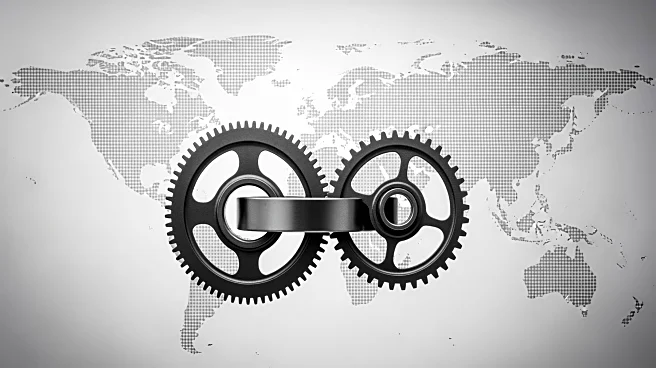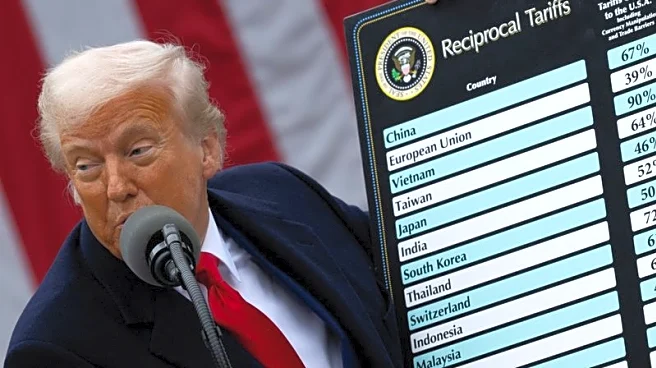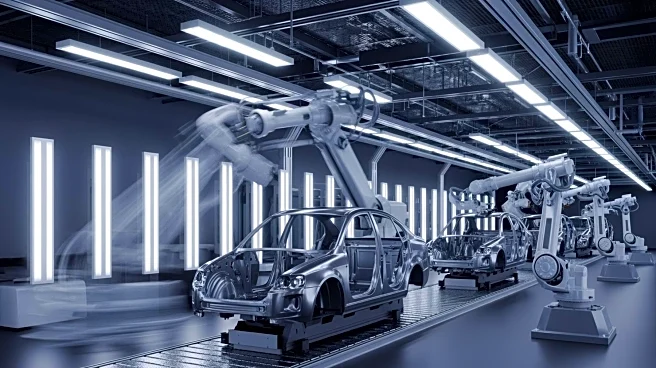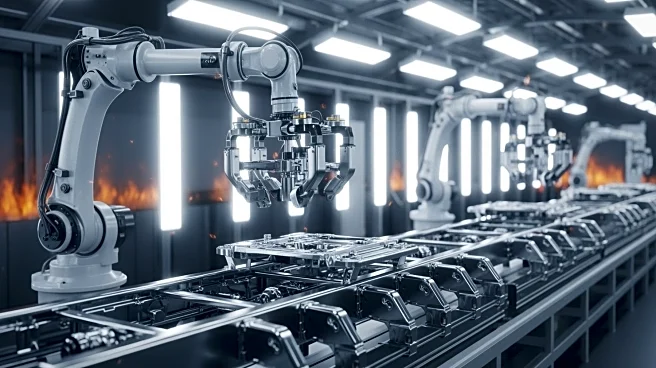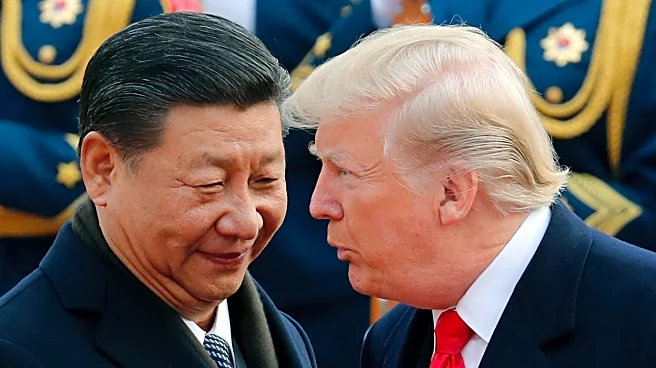What's Happening?
Ford Motor Company CEO Jim Farley has expressed concerns over the impact of President Trump's tariffs on the company's operations and investments in the United States. Despite Ford building over 80% of its
American-sold vehicles domestically, the company still relies on imported parts that have been significantly affected by the tariffs. Farley highlighted that these tariffs have cost Ford approximately $2 billion, potentially jeopardizing its investments in the U.S. and giving an edge to competitors. In a discussion with Kris Van Cleave, Farley also mentioned his choice to drive a Chinese-made electric vehicle, underscoring the complexities and challenges faced by the automotive industry under the current tariff regime.
Why It's Important?
The tariffs imposed by President Trump have broader implications for the U.S. automotive industry and its global competitiveness. Ford's experience illustrates the financial strain tariffs can place on companies that rely on international supply chains, even when a significant portion of their production is domestic. The $2 billion cost to Ford highlights the potential for reduced investment in American operations, which could affect jobs and economic growth. Additionally, the tariffs may inadvertently benefit foreign competitors who are not subject to the same import costs, potentially shifting market dynamics. This situation underscores the delicate balance between protecting domestic industries and maintaining global trade relationships.
What's Next?
As the tariffs continue to impact the automotive industry, companies like Ford may need to reassess their supply chain strategies and investment plans. The ongoing financial burden could lead to increased lobbying efforts for tariff relief or adjustments. Additionally, the industry may see a push towards more localized production to mitigate the effects of tariffs, although this could involve significant restructuring costs. Stakeholders, including policymakers and industry leaders, will likely engage in discussions to address these challenges and explore potential solutions to support domestic manufacturing while maintaining competitive global trade practices.



